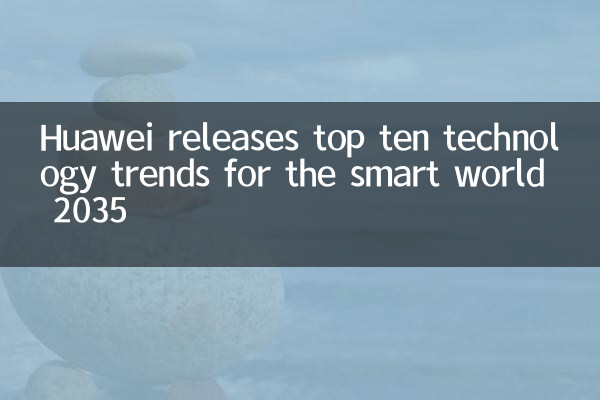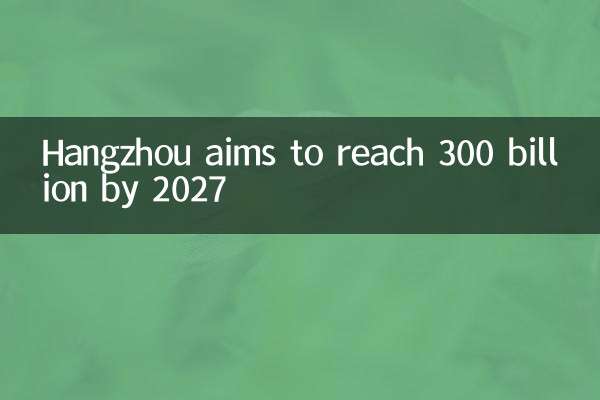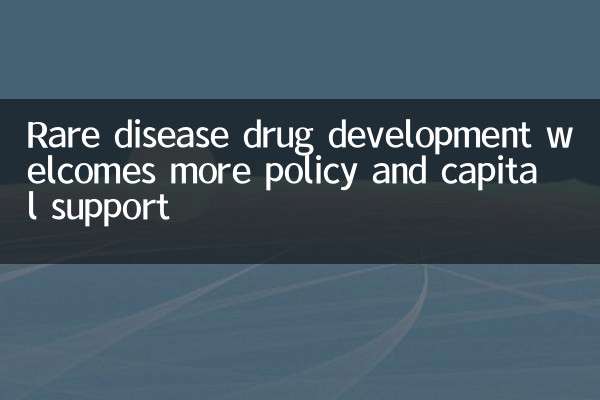Huawei releases top ten technology trends for the smart world 2035
Recently, Huawei released the report "Top Ten Technology Trends for the Smart World 2035", looking forward to the key technological directions that may change human society in the next decade. The report is based on the scientific research results and industry insights of Huawei Global Research Institute, providing forward-looking thinking for digital transformation and intelligent upgrades.
1. Overview of the top ten technical trends

| Ranking | Technology Trends | Key Features |
|---|---|---|
| 1 | Ubiquitous connection | 100 billion IoT, 10Gbps are everywhere |
| 2 | Cognitive intelligence | AI has common sense reasoning skills |
| 3 | Green calculation | Energy efficiency improvement 100 times |
| 4 | Digital Energy | Clean energy accounts for more than 50% |
| 5 | Cloud Native | Application development efficiency is 10 times |
| 6 | Fusion of virtual and real | The digital world interacts seamlessly with the physical world |
| 7 | Trusted architecture | Endogenous security, zero trust |
| 8 | Biological calculations | DNA storage breaks through ZB level |
| 9 | Quantum computing | Practical quantum computer |
| 10 | Space Exploration | Integrated communication network of heaven and earth |
2. The breakthrough direction of core technology
Huawei particularly emphasized three key breakthrough directions: cognitive intelligence, green computing and digital energy. In the field of cognitive intelligence, Huawei predicts that by 2035, AI will have common sense reasoning capabilities similar to humans and can handle complex decision-making problems. In terms of green computing, through chip architecture innovation and algorithm optimization, the energy efficiency of computing devices is expected to be 100 times higher. Digital energy technology will promote clean energy to account for more than 50% of ICT infrastructure.
III. Industry impact analysis
| industry | Main impact | Time node |
|---|---|---|
| Communication | 6G commercial, integrated world network | 2030-2035 |
| manufacturing | Digital twin penetration rate exceeds 80% | 2035 |
| Medical | AI-assisted diagnosis accuracy exceeds 95% | 2030 |
| transportation | L5 autonomous driving commercialization | 2035 |
| energy | Smart grid coverage rate 100% | 2035 |
4. Prospects for Social Change
Huawei predicts that by 2035, these technologies will profoundly change human society: 90% of families will have home robots, 70% of enterprises will adopt cloud-native architecture, and 50% of GDP will be created by the digital economy. At the same time, digital technology will help the world reduce carbon emissions by 15%, providing key support for achieving the carbon neutrality target.
5. Expert opinion
Industry experts believe that Huawei's technology trend report released this time is very forward-looking. Zhang Ping, an academician of the Chinese Academy of Engineering, said: "These technical directions are highly consistent with China's 14th Five-Year Plan, especially in the digital economy and green and low-carbon fields." Analysts at International Data Corporation (IDC) believe that 2035 may become a key turning point for humans to enter an intelligent society.
6. Implementation path suggestions
Huawei recommends that the industry promote technological development from four dimensions: 1) Strengthen investment in basic research; 2) Build an open innovation ecosystem; 3) Improve standards and regulations; 4) Cultivate interdisciplinary talents. The company said it will continue to invest more than 15% of its sales revenue in R&D every year, and it is expected that the cumulative R&D investment will exceed 1.5 trillion yuan by 2035.
The release of this report is a critical period when global technological competition is intensifying. Huawei systematically looks forward to future technological development, not only points out the direction for its own strategic layout, but also provides an important reference for the innovative development of the entire ICT industry. The industry generally expects these technological trends to be realized as scheduled and jointly promote the construction of a smarter, greener and inclusive future world.

check the details

check the details